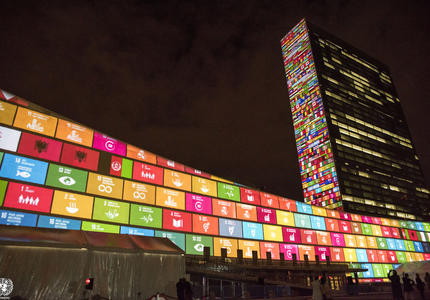For almost ten years, the European Union has included chapters on sustainable development in its bilateral trade agreements. The content of these chapters and the rigour of its provisions vary between agreements, but "best practices" emerge, as in the agreement between the EU and Japan, cited as an example by the European Commission. What is this nascent "sustainable trade agreement standard" and what is it worth? How persuasive can the EU be when faced with partners who are reluctant or hostile to protect the environment? The twofold example of the EU-Japan and EU-Mercosur agreements shows that the European trade and environment doctrine suffers from significant inadequacies, which a very substantially revised final agreement between the EU and Mercosur will have to resolve, at the risk of being rejected.
EU best practices in environmental protection in trade
In the draft agreement linking the EU to Mercosur, published on 1 July 2019, the European Commission (EC) states that "the chapter on trade and sustainable development is equal to the chapters in other modern agreements, such as those concluded with Mexico or Japan". The English version is even more eloquent, as it speaks of an agreement that meets the « highest standards » of sustainable development. Why is the EC citing these two special agreements?
The EU-Japan agreement, like the EU-Mexico agreement, does not place the chapter on "Sustainable Development" under the jurisdiction of the dispute settlement mechanism between States. The objective remains to promote cooperation and settlement through dialogue, and excludes, in the event of failure of conciliation, the use of a formal settlement if one of the parties violates its sustainable development obligations. Countries commit to "cooperate to promote the positive contribution of trade" to the low-carbon transition; they "commit to work together in climate action to achieve the objectives of the United Nations Framework Convention on Climate Change (UNFCCC) and the Paris Agreement" (EU-Japan, Article 16.4 §4). It is regrettable that the suspension of the trade agreement in the event of withdrawal from the Paris Agreement or insufficient efforts is absent. The logic is that of cooperation between benevolent parties, to find a solution through dialogue in the event of wanderings. The agreement secures a national space for each country to do what it needs to do on climate change. "Nothing in the agreement prevents a country from putting in place the required policies as long as they are not applied in a manner that constitutes arbitrary and unjustified discrimination or a disguised restriction on trade" (EU-Japan, Article 16.4 §5). This is the logic that prevails at the World Trade Organization (WTO), no more, no less.
The lack of dispute settlement between States with regard to sustainable development and the environment is due to the relative appetite of the parties to "tighten" the provisions on this matter, and in the face of this, the obstinacy or renunciation of the Commission, for which the chapter on "Sustainable Development" is only one of 25 or 30 chapters.
The strategic use of trade agreements for non-commercial purposes
A trade agreement must be driven by a strategic purpose, and supported by a simple story. It is understandable, for example, that "positive" countries sign trade agreements among themselves promoting the free trade of low-carbon products and technologies, as is the case with the agreement between New Zealand, Costa Rica, Fiji, Iceland and Norway. In this context, trade acquires a purpose that goes beyond mere market access and can meet public expectations.
It is also understandable that the EU wishes to assign to bilateral trade agreements the role of environmental and social safeguards, and to ensure that partner countries do not unravel or renounce the application of national legal provisions as a result of their commitments in this area. A trade agreement can serve this purpose: to avoid backsliding, in the case of partner countries where a majority indifferent or hostile to social and environmental issues comes to power. These scenarios are not new, but they are taking on considerable importance today, due to the emergence of sovereignist and "climatophobic" majorities, to forge an ugly word, and the delay in achieving the collectively agreed environmental objectives. We are experiencing a reversal in history since the Rio Earth Summit in 1992: some countries are abandoning the game of sustainable development as we knew it, i.e. a sum of efforts aimed at bringing together growth, social progress and environmental protection. Should the EU trade more with these countries, and if so, under what conditions?
The EU-Mercosur agreement is a textbook case. It brings together a group of "positive" countries (the EU) and a country that is "recalcitrant" in terms of environmental protection (Bolsonaro's Brazil). Preventing Brazil from leaving the Paris Agreement and devastating its biodiversity, and helping interested parties to support and implement mitigation and protection measures, could justify the signing of a trade agreement between the EU and Mercosur, provided the EU consolidates its own environmental requirements and the use it can or will make of them in trade diplomacy without ambiguity or divergence. If the EU's strategic aim is really to use trade leverage to avoid environmental regression, there are agreement suspension provisions , which should be red lines and listed in the “best standards” of the Commission, which could, on their basis, begin to build a narrative, in which trade links it to either "positive" or "recalcitrant" countries, as governments change, without damaging the environment. And if Brazil refuses this narrative, free trade will wait; the two blocs after all are already trading together under the general WTO regime of which they are—or have been—the most fervent supporters.




